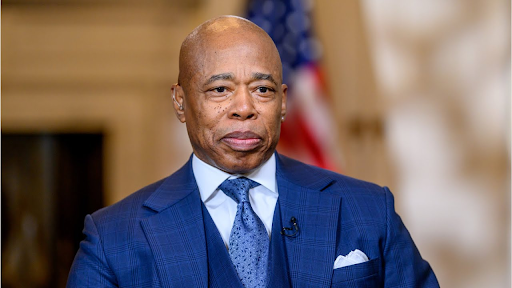The vibrant neighborhood of Washington Heights stretches across the northern tip of Manhattan. The tract of land stretches roughly 35 blocks, starting at 145 Street. It is one of the borough’s smaller neighborhoods, but the people who live there represent one of New York City’s largest cultural populations.
Immigrants from the Dominican Republic make up over 7-percent of the city’s total population, and are by far the largest immigrant group. Many settle in Washington Heights, an area where people address one another first in Spanish, then in English. Nearly every balcony and store window sports a Dominican flag, and visitors quickly come to understand that here, they are the foreigners.
One of the main boulevards that run through Washington Heights is named for Juan Pablo Duarte, often called the father of Dominican independence. Along the street there are restaurants that serve traditional Dominican food and bodegas advertising their wares in Spanish.
Latin music bubbles from open windows, and on residential blocks, there is the constant delicious smell that accompanies the promise of something good to eat.
Early this month I spent some time in Santo Domingo, the capital city of the Dominican Republic. In the eight days I spent there, I spoke, in embarrassingly halting Spanish, to hotel employees, blackjack dealers, and taxi drivers – and everyone, it seemed, knew someone in New York.
Lara, who picked me up from the airport, raised three children in New York before returning to Santo Domingo. His children still live here, and his grandchildren are second-generation Americans. Lara, like most of Washington Heights’ immigrants, came seeking a better life. In the Dominican Republic, poverty is widespread. It is difficult to walk down the street without being offered a shoeshine. You can’t relax on the beach without dozens of vendors casting their shadows over you while they try to sell you food, jewelry, and even inflatable pool toys.
In Washington Heights, Lara said, the people are still poor, but things are better. The children of immigrants can go to good schools, and they have the potential to achieve more than would be possible for them on their native island. Education is of great importance in Dominican families, and Dominican children now make up a whopping 10-percent of the student population in New York’s public schools.
I have a professor who has become, over the last year, my first real mentor. When I first proposed the idea of a column about “all things New York,” he told me New York is a city of villages. It’s a place where you can find yourself in communities where it seems the transplanted residents simply packed up their country and culture and carried it here.
Nowhere is this truer than in Washington Heights. Dominican family values – honesty, loyalty, cultural identity and pride – permeate the society. Church services are conducted in the traditional Dominican fashion, and at Columbia Presbyterian Hospital, in the heart of the neighborhood; most of the staff speaks Spanish with a Dominican dialect.
It’s often said that New York – the city where America’s early immigrants first stepped ashore – is a melting pot. I’m not sure that’s true. The Dominican immigrants who arrive here en masse may be leaving the island of Hispaniola for the island of Manhattan, but culturally, they don’t leave anything behind. They don’t assimilate, or melt into an existing culture.
Instead, they’ve created a thriving, dynamic and colorful neighborhood on the north end of the island. And I think that’s so much better. Because really, isn’t that what makes this city special? When people in New York meet for the first time, they ask one another, “So, where are you from?” It’s because the people who are here arrive from everywhere, and bring with them traditions, customs, languages, recipes and things to teach each other. It’s not a melting pot – it’s an oil painting. Different textures and pigments piled one on top of the other, swirling together to create a work of art.
My professor was right. New York is made of villages, and it’s so easy to visit them all. Go to Chinatown, and walk around a traditional fish market. Go to Little Italy, and buy biscotti from a third generation Italian-American. Take the train up to Washington Heights, find a dance club, and learn the merengue. And talk to people. Learn new words. Order the weirdest thing on the menu, and then ask for the recipe. Learn what it means to be an immigrant, and you’ll learn what it means to be a New Yorker.







